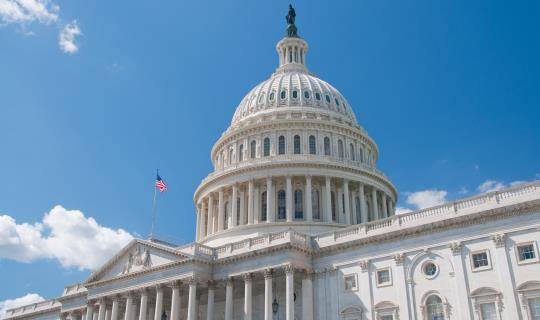How specialty practices can prepare for coming changes to reimbursement
By Brad Tallamy

MPFS is a fee-for-service payment model that pays for services such as office visits, diagnostic tests and procedures. Each service is assigned a Relative Value Unit (RVU) which represents the provider’s time to do the service, the practice’s expenses and the cost associated to malpractice. Adjustments are made to these RVUs to account for geographic differences in the cost of delivering care. The geographic adjusted RVU is then multiplied by a conversion factor to determine the fee schedule amount. Updates are made annually to the RVUs, geographic adjusters and the conversion factor.
In 2022, the conversion factor drop will be 3.75 percent. Across the board, that lowers the dollar value of each service performed by physician practices. Some specialties will see an additional drop due to the reduction to the RVUs for the services they provide.
Medicare sequestration is payment reduction in the Medicare Fee-for-Service (FFS) program that was mandated by the Budget Control Act of 2011. Since April 2013, a 2 percent reduction has been applied to Medicare payments for all services, including buy and bill services such as drugs and supplies. To assist practices struggling with the financial strain brought on by the pandemic, the government put a pause on sequestration for 20 months, from May 2020 through December 2021.
The amount of money a provider is receiving due to sequestration relief is dependent the volume of traditional Medicare patients and the type of services billed. For example, our analyses show that a typical oncologist is receiving an additional $5,332 more per month for services while the government has paused sequestration.
Reports within our analytics platform can show the impact of both the proposed 2022 Medicare Fee Schedule and the reinstatement of sequestration. While sequestration applies to only traditional Medicare patients, many Medicare Advantage and commercial payers base their fee schedules on the Medicare rate so changes made by Medicare can have a rippling impact on other payers.
Uncertainties ahead
The uncertainties of COVID-19 and emerging variants also come into effect. We don’t know what will happen next year. Fluctuations in patient volume coupled with reduced reimbursement due to fee schedule changes and reinstatement of sequestration can have significant impact to the practice’s cash flow. It's difficult for all practices to navigate these waters, but particularly small, independent practices.What to do: Better track money coming in and out
Practices need accountability of funds. When the pandemic hit, there were ways to get additional money through the paycheck protection program and CARES act. Money came in to help practices pay bills and keep their staff, even though there were fewer patients.
Any healthcare provider that received at least $10,000 from the Provider Relief Fund (PRF) during the first half of 2020 must
report on its use of those funds by September 30, 2021. Many terms and conditions accompanied the acceptance of these payments and all recipients must submit data sufficient to demonstrate that funds are used for healthcare-related expenses or lost revenue attributable to COVID-19. Whether or not a clinic was able to carefully account for their spending during a pandemic is going to become an important question.
Now, specialty physician practices are without those extra monies coming into the practice and are facing reduced payments starting January 1, 2022. Formulating a budget that will help meet overhead expenses without this additional financial help will be paramount.
During a recent webinar, we polled practice staff to ask, “How much has your practice planned for reintroduction of sequestration?” Two-thirds of respondents chose “Little to none," indicating there are precious few months left to adjust budgets.
What to do: Participate in grassroots campaigns
Our specialty physician practices took action in April, when providers sent nearly 1500 letters to their Congressional representatives urging the sequestration moratorium be extended. Due in part to this organized effort, the moratorium was successfully extended to the end of 2021. Practices can use Community Counts to identify their representative and start another grassroots campaign.The conversion factor is law, but for 2021, Congress added an additional $3 billion to the Physician Fee Schedule to offset the decrease. Will Congress step in again and help offset some of the changes proposed in the fee schedule? It's a little too early to tell at this point. The recent bipartisan infrastructure bill actually extended sequestration to help pay for that agreement. Congress has clearly signaled its intention to re-instate sequestration at some point. Will it be January 1st?
A lot rides on what happens this fall with the Delta variant and others. If schools are open, if patients can get into practices, if hospitals are not overwhelmed, those cuts will likely go back into effect. Policymakers may consider an extension if major physician groups push for one. Members of Congress care more about hearing from physicians in their states than lobbyists in D.C.
Admittedly, it’s a long shot that the sequestration moratorium will be extended past January 1st. It's best for the practices to plan for it to go away and be financially prepared for the reduction.





